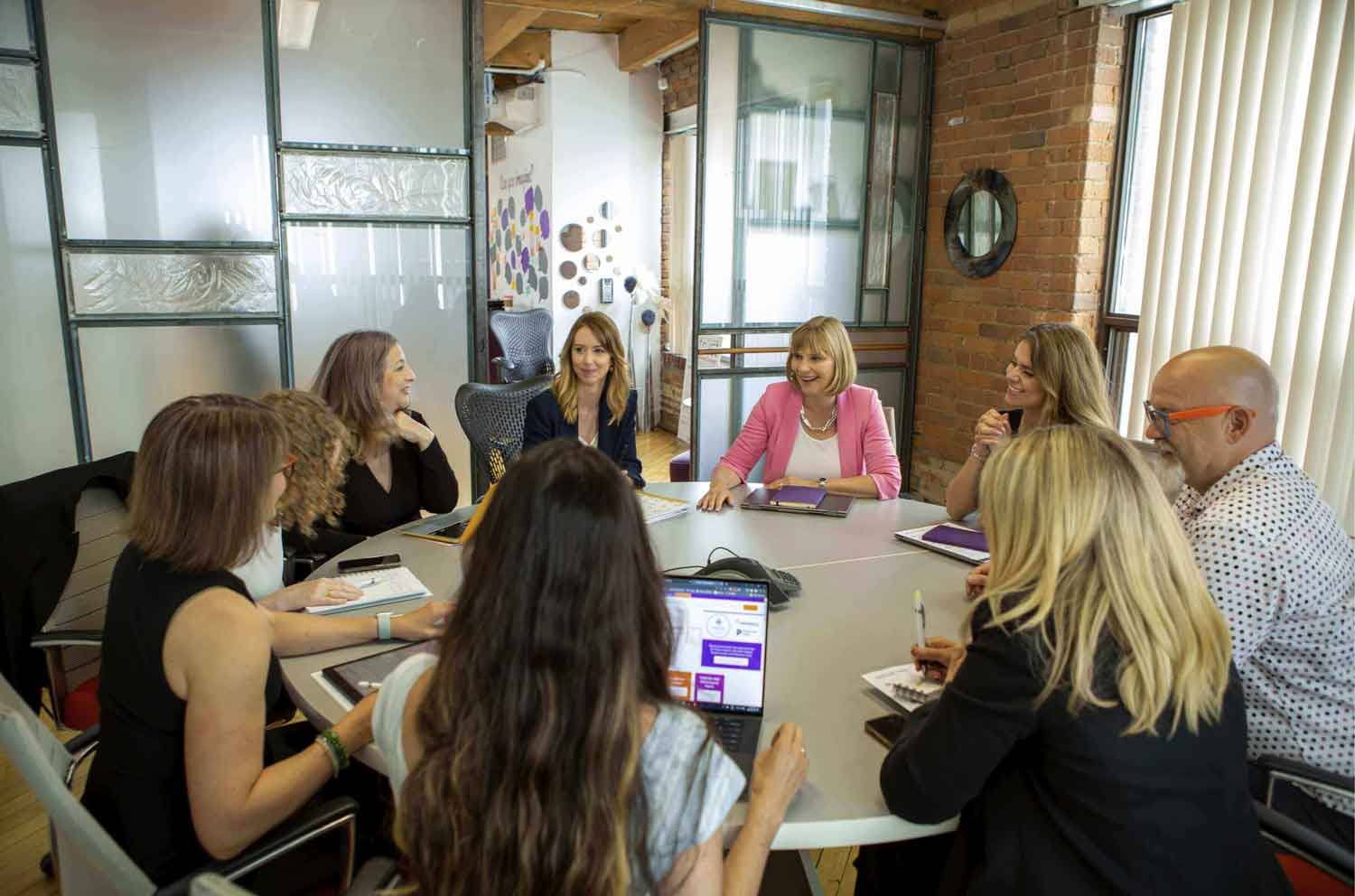Guest blog post by Carole B Eves
We’re excited to share that Carole will be taking a new head shot for each attendee at our annual Alumni Exchange, Recharge 2015. Get your ticket now.
You only have one chance to make a first impression. Most of us hear this line from our parents for the first time, somewhere between the ages of sixteen and eighteen. (Feel free to allow your inner teenager to roll their eyes at this point).
This advice is usually accompanied by a few key tips. Wear your best clothing, smile and speak clearly, give a firm handshake and be sure to give just the right amount of direct eye contact as you do so. Today, we make a first impression on prospective employers and clients long before we shake their hands. Enter the executive portrait, used on LinkedIn, in publications and at conferences. Here are a few things to consider, when investing in your personal brand by having a professional photograph done.
1. What personality traits does your portrait need to project?
Think about a description of the first impression that you would like to make. A hedge fund manager may want to say, “This is a face that you can trust.” An IT professional may want to come across as a team player, and a television executive might need to project a combination of chic sophistication and friendly approachability. This description will inform your wardrobe, the posing, location and lighting used in your portrait.
2. What should you wear to your executive portrait shoot?
Your clothing should reflect your personality description, as well as your chosen field. An interior designer could choose a casual look with dark jeans and a fitted shirt, while a lawyer may want to wear a business dress and tailored jacket. Regardless of your industry, be sure to choose solid colours for your wardrobe. This means – please avoid loud prints, stripes and plaid. Dark colours, metallics and jewel tones work very well. Choose a colour that compliments your skin tone and eye colour. Bring a structured jacket or sports coat to layer over a crisp, fitted dress shirt, or a sleeveless dress. A plain, white, dress shirt or blouse simply does not photograph very well, and does not convey much personality, so leave it at home. Even though you may want to be comfortable, resist the urge to wear anything too large or shapeless.
3. How much personal grooming is essential?
You may go to as much, or as little effort as makes you happy, but there are a couple of elements that guarantee good results. Have a haircut one week before your photo shoot, to allow for your hair to settle into a shape that you can style successfully. Ensure that your personal grooming is up to scratch – facial hair and fingernails are the two areas that are most noticeable in a photograph. Ensure that your nail colour is either neutral or a classic shade, as these photographs will outlive this season’s trend. Hydrate really well in the days leading up to your shoot, exfoliate and moisturize your face, neck and your hands the day prior to the session. Get a good night’s sleep on the night before you have your photograph taken.
4. What locations and poses work best?
You may choose a studio portrait with a plain background, or an environmental photograph in your workplace, or even outdoors. The most important thing to keep in mind when choosing your location, is that it needs to be reflective of you, and of the tone that you’d like to achieve with your portrait.
The poses that you pick from your final selection should look entirely natural and representative of you as a person. That doesn’t mean that they should not be posed at all. A skilled photographer will carefully guide your body into both flattering, and authentic shapes.
There are two posing tips that apply to whatever poses you try. The first is to do the “turtle”. This is where you project your face forward, towards the camera, like a turtle out of its shell. This separates your face from your neck, which ensures a nice, clean jawline. It will feel very strange, but it looks great in a still image. Once you have the “turtle” perfected, tilt your head down ever so slightly – as if you are nodding in agreement. This opens your eyes up to the camera, which makes your face more engaging to gaze at. The second tip is to try smiling with your eyes. It is easier than it sounds. Contract the tiny muscles just below your lower eyelids very slightly, almost as if you are trying to read the fine print on a label. This is not a full squint – just a tiny tweak. The key is to first think about smiling with your eyes, and your mouth will follow of its own accord. If you smile with your mouth first, you run the risk of ending up with expressionless, insincere eyes. Even an unsmiling portrait requires friendly eyes.
5. How do you choose the best photographer for your needs?
The technical expertise, experience and well-maintained equipment of your chosen photographer are a given, so we can set those aside for now. The most important factor in choosing your photographer is in the experience that they create for you. A good photographer is entirely client-focused, and creates an environment where you feel wholly prepared, supported and guided throughout the process. The second most essential factor to consider, is the style of your photographer. Some photographers specialize in clean, bright, studio-lit portraits, while others have perfected the skill of location shooting.
One last tip is to schedule a photoshoot for your entire team across one or two days, with the same photographer. Not only do you end up with a cohesive, uniform result across all of the photographs, it is usually more cost effective as well.
QUICK TIPS TO TAKE AWAY
1 – Decide what first impression you’d like to make. Are you a dependable face that clients can trust, or a maverick thought leader who inspires greatness? Every other detail is based on this character description.
2 – Wear structured clothing in solid colours, without distracting patterns. A jacket layered over a fitted shirt or blouse adds variety to your final selection of portraits.
3 – Prepare your grooming well in advance. Have a haircut one week before your shoot, and tidy your nails and facial hair. Hydrate, moisturize and get a good night’s sleep the night before your portrait is taken.
4 – Do you want a studio portrait or an environmental photograph? There is no wrong answer – it has to represent you and the tone that you would like to project in the final image.
5 – Do the “turtle” and smile with your eyes in your portrait. Here’s how: Project your face forward towards the camera to separate your face from your neck. Contract the tiny muscles below your eyes very slightly to create a friendly, smiling expression. Eyes first, and the mouth will follow.



